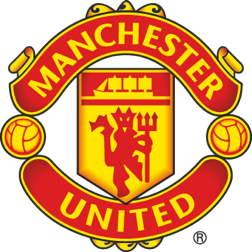Collecting the game: Football trading cards
To celebrate the rich heritage of Manchester United, the club's museum curators are giving you unique access to some of the most interesting objects from its collection.
From rare football collectables to letters and postcards sent by the club’s notable figures, the feature will run weekly over the summer months and give you a glimpse into United’s amazing historical archive.
To kick off, we’d like to focus on football trading cards, whose unprecedented surge in popularity over the pandemic caused spikes in sales not seen for over three decades. Eager to fill the abundance of free time generated by the lockdowns, adults who were kids in the 1980s returned to their childhood pastime of collecting Panini stickers and Topps cards, causing the value of some of the most sought-after ‘specimens’ to rise by a staggering 90 per cent.
With millions tuning in to watch pack-opening clips on YouTube and following #sportscards on TikTok, the hobby has quickly won the hearts of younger generations thus cementing its ‘trendy’ status.
Besides their monetary value, football cards from the Newton Heath era also serve as a valuable source of information about our kits, especially with a limited photographic archive in existence. Rare and fragile, the trading card pictured above confirms that by the late 1890s, the struggling Newton Heath side opted for a budget white shirt and knee-length blue shorts as their first choice of strip.
Originating in mid-nineteenth century America, trading cards were brought to the UK in 1887 by a Bradford-based businessman John Baines. Inspired by the commercial success of baseball cards across the Atlantic, Baines began selling his football cards from a carriage that was pulled by a horse with a monkey on its back - a rather eccentric way to grab the attention of potential buyers!
Sold in packets of six for a halfpenny, Baines' cards came in various shapes and covered both professional clubs, like Newton Heath, and amateur local teams. To entice young collectors, Baines organised regular competitions and rewarded those who managed to assemble full sets with a free football jersey. Unlike modern collectors, who tend to build their collections via card swapping, their Victorian counterparts exchanged cards through games; one of the reasons why good-condition examples of Baines' cards are very rare today.
The Baines monopoly didn’t last long, as fellow Bradford businessman WN Sharpe introduced his ‘Play Up’ cards to the thriving trading cards market. By the early twentieth century, many companies recognised the cards as a huge marketing opportunity and began producing their own sets. From cigarette and soap manufacturers to newspapers and magazines, football cards became an important sales strategy for many businesses. To keep collectors engaged, the design of the cards gradually moved away from one side of illustrations and began to include useful football tips and players’ profiles on the back.
The player featured on the card above, Harry Moger, was the goalkeeper for United’s first great team of the Edwardian era. Having started his career as the club's reserve team keeper, he moved up to the first team in his second season with the Reds and remained our first-choice goalkeeper until 1912, helping to win two Football League titles in 1908 and 1911 and the FA Cup in 1909.
By the early twentieth century, trading card enthusiasts began to ditch a games-based swapping strategy of the Victorian era and started to place more value on the condition of their sets. Having recognised the collectors’ desire to keep their cards intact, many companies and publishers, like Topical Times, began to produce branded albums to cater for this need.
Only one United player, Tom Bamford, made it into this edition of the panel portraits pictured above. A prolific goalscorer, Bamford joined the Reds from Wrexham in 1934. His goals played an important part in the club’s promotion to the First Division in both the 1935/36 and 1937/38 seasons.
Trading cards continued to thrive in the post-war era and into the 1960s when Typhoo Tea took the hobby to the next level with their extra-large premium collection, pictured below. They were nearly A4 in size!
The iconic partnership of Best, Law and Charlton has been the focus of many trading card collections up and down the country. Suitable for framing or pinning to a wall as posters, these large cards decorated many bedrooms of young fans in the 1960s. With 665 goals and 1,632 appearances between them, the United Trinity continues to inspire trading card collectors of all ages, determined to build their sets around them.
Player trading cards remain a captivating hobby and whether you have hundreds of them, or you're about to pocket your first one, our message is the same... happy collecting!
To see our amazing collection in person, book your visit to the Museum & Stadium Tour at Old Trafford.





